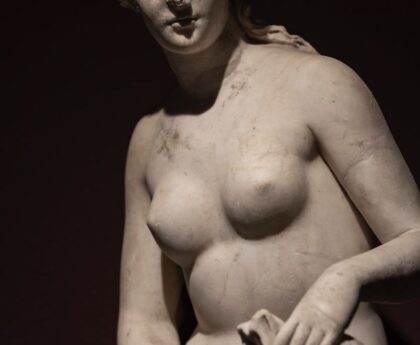Colleen Ballinger, Creator of YouTube’s Miranda Sings, Denies Grooming Allegations in Musical Video
The Allegations and Ballinger’s Response
Colleen Ballinger, the YouTube creator famous for her character Miranda Sings, has recently been embroiled in controversy as allegations surfaced accusing her of forming inappropriate relationships with teenagers. In a video posted on her Colleen Vlogs channel on YouTube, Ballinger vehemently denied these allegations and defended herself through song and conversation.
Ballinger began the video by acknowledging the accusations and addressing them directly. She stated, “Some people are saying things about me that just aren’t true,” and expressed her intention to set the record straight. While her team had advised her against making a statement, Ballinger found another way to express herself – through music.
She sang, “Even though my team has strongly advised me not to say what I’m going to say, I realized they never said I couldn’t sing about what I want to say.” Throughout the 10-minute video, she used her ukulele and lyrics to express her feelings and address the allegations. Ballinger admitted to messaging her fans in the past, but claimed it was not in a creepy way, but rather, as an attempt to befriend them. She acknowledged that she had overshared at times but assured her audience that she had changed her behavior and taken responsibility for her actions.
A Discussion on Accountability and Public Scrutiny
The video raises important questions about accountability in the age of social media and public scrutiny. Ballinger’s decision to respond through a musical video rather than a traditional statement reflects the changing dynamics of how public figures navigate allegations and controversy.
It is crucial to note that Ballinger’s response highlights the challenges of addressing complex issues within the limitations of social media platforms. In this case, Ballinger attempted to convey her perspective and emotions through music. While this approach may seem unconventional, it is a testament to the evolving nature of digital media and the creative ways individuals choose to express themselves.
Perception and the Role of Social Media
Ballinger’s Miranda Sings character has garnered an immense following, primarily among younger viewers. The allegations against her raise questions about the appropriateness of certain content for a young audience and the responsibility of content creators to communicate that explicitly.
According to Ballinger, she has made it clear that her Miranda Sings content is “PG-13” in nature and not intended for young viewers. She asserts that it is ultimately the responsibility of parents to monitor and determine what is suitable for their children. This raises broader concerns about the influence of online content on young minds and the potential impact of inappropriate or misleading material.
Reflection on Mistakes and Personal Growth
Throughout her video response, Ballinger acknowledges making mistakes and poor choices in the past. She takes ownership of her actions and expresses remorse for any harm caused. This kind of reflection and growth is crucial in personal development, and it is encouraging to see individuals in the public eye openly taking accountability for their actions.
However, it is important to recognize that public figures are subject to increased scrutiny, and allegations against them can have a lasting impact on their careers and reputations. As such, it is crucial for both the media and the audience to approach such situations with nuance and fairness, allowing space for introspection and growth.
Editorial
The allegations against Colleen Ballinger are serious and warrant a comprehensive investigation. While her video response aims to provide her perspective, it is essential to listen to all parties involved and for investigative authorities to conduct a thorough examination of the allegations.
Ballinger’s choice to respond through a musical video is unconventional, but it is a reflection of the changing media landscape. In an era where public figures face immense scrutiny from both the media and the public, individuals are exploring new ways to express themselves and engage with their followers. However, this approach should not overshadow the importance of addressing crucial issues seriously and transparently.
The incident also serves as a reminder of the power dynamics inherent in online communities and the responsibility content creators have towards their audience, particularly when it comes to engaging with younger individuals. As the popularity of online platforms continues to grow, it is crucial for creators to ensure that their content is suitable for their intended audience and that they take responsibility for any missteps.
Advice
For content creators and public figures navigating allegations or controversy, it is imperative to approach the situation with thoughtfulness and consideration. Here are some recommendations for those facing similar circumstances:
1. Open Communication: Establish open lines of communication with your audience and address allegations or controversies directly. Honesty and transparency are key in maintaining trust.
2. Seek Professional Guidance: Engage with public relations professionals or legal experts who can help navigate the complexities of addressing serious allegations.
3. Personal Growth and Accountability: Reflect on past mistakes, take responsibility for any harm caused, and make genuine efforts to grow personally and professionally.
4. Collaboration with Investigative Authorities: Cooperate fully with any ongoing investigations, facilitating a thorough examination of the allegations.
5. Reflect on Content Appropriateness: Evaluate the suitability of your content for different age groups and clearly communicate any age restrictions or disclaimers.
In all situations, it is important to prioritize the well-being and safety of the individuals involved, as well as the integrity of the community and platform in which the allegations arise.

<< photo by Ayodeji Fatunla >>
The image is for illustrative purposes only and does not depict the actual situation.




